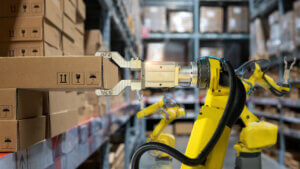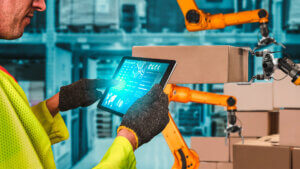Do possible changes to stock profiles present a serious barrier to warehouse automation? Just how much should you care? By Dan Migliozzi, Head of Sales at Invar Group
A concern voiced by many businesses looking to adopt warehouse automation is: what happens if stock profiles change? Commercial survival in a competitive market requires a company to respond and adapt quickly, often with upgrades to existing products or the introduction of entirely new ones. These items may have different profiles – perhaps larger or smaller dimensions /weight, or new packaging characteristics.
So, can automation cope with problems of this nature – is there the necessary flexibility?
This question often comes up. But is it really such a big issue? What are the risks? Most businesses, whether they be in fashion retail, electronics or engineering tend to stay within the parameters of their existing product focus, and in most instances this means that only a relatively small degree of flexibility may be needed when designing an automated system. The risk of changes to stock profiles being disruptive is low and should be considered in the light of the huge advantages that automation can offer in terms of capacity, speed and customer service.
Of course, that’s not to say that radical changes to stock profiles never happen. Therefore, there are important ways of mitigating the risks, if you do your homework.
Before any investment in automation is made it’s critical that due diligence is paid to understanding the future objectives and direction of the business. Beyond short-term objectives, such as sales targets and planned promotional peaks, it’s essential to gain insights into the future strategic ambitions of the business. Gaining a full understanding of C-suite plans and objectives to a five-year horizon is invaluable in determining the scope and scale of solution that may be required – and any likely radical changes to product profile should be flagged up at this stage.
Careful analysis of data, aligned to future business expectations, is critical when setting the design parameters of the solution and the degree of flexibility and scalability required. Product profile is just one consideration, order profiles, volumes, capacity and peaks are equally important – if not more so.
However, even if some stock profiles do change over time, there are ways forward. Using the example of a tote-based system, the limitation in this instance is the size of the tote. For products that get smaller, totes can be easily subdivided and a simple software update made. Oversized items may need to be accommodated through a different solution, which could be automated or manual. One of the key advantages of working with an independent systems integrator, with in-house software capabilities, is that alternative technologies can be more easily introduced and integrated to create a cohesive, holistic and flexible solution.
Product profile may be an important consideration when setting out to design an automated system, but the risks associated with changes to profiles are relatively low. However, order profiles and volume growth forecasts are far more susceptible to change and can hold much greater influence over the flexibility and scalability required of a system.
Traditional rigid, fixed to the floor automation is unlikely to offer the agility needed these days. But, thankfully, new technologies, such as autonomous mobile robots (AMRs), are transforming fulfilment operations by offering far more flexible and scalable solutions for goods-to-person order picking operations. AMR systems combined with pick-to-light technology can boost order picking performance from under 100 units per hour using traditional methods, to up to 400 picks per hour, with an ROI that can be as little as 12 months.
As AMRs are used to transport individual mobile shelf units between storage and picking stations, any significant changes to product profile can be accommodated by simply making adjustments to the required number of mobile shelf units. Provided there is adequate space within the warehouse, it’s a highly effective means of providing flexibility.
And autonomous mobile robot systems have a huge advantage over fixed systems in that you can simply scale up the operation by adding more robots – increasing the capacity of the system as required. Having 80 robots working independently in a warehouse is not a problem, as each performs its duties by plotting their own path, following QR codes placed on the warehouse floor. Installation is straightforward and fast, and provides a future-proofed solution suited to a fast expanding business.
With AMRs being so easily scalable, flexible and affordable, automation is nearly always the right answer. The risk of stock profile changes should not be seen as a serious barrier to adopting automation. Building capacity and resilience for the future should be the key objective.






